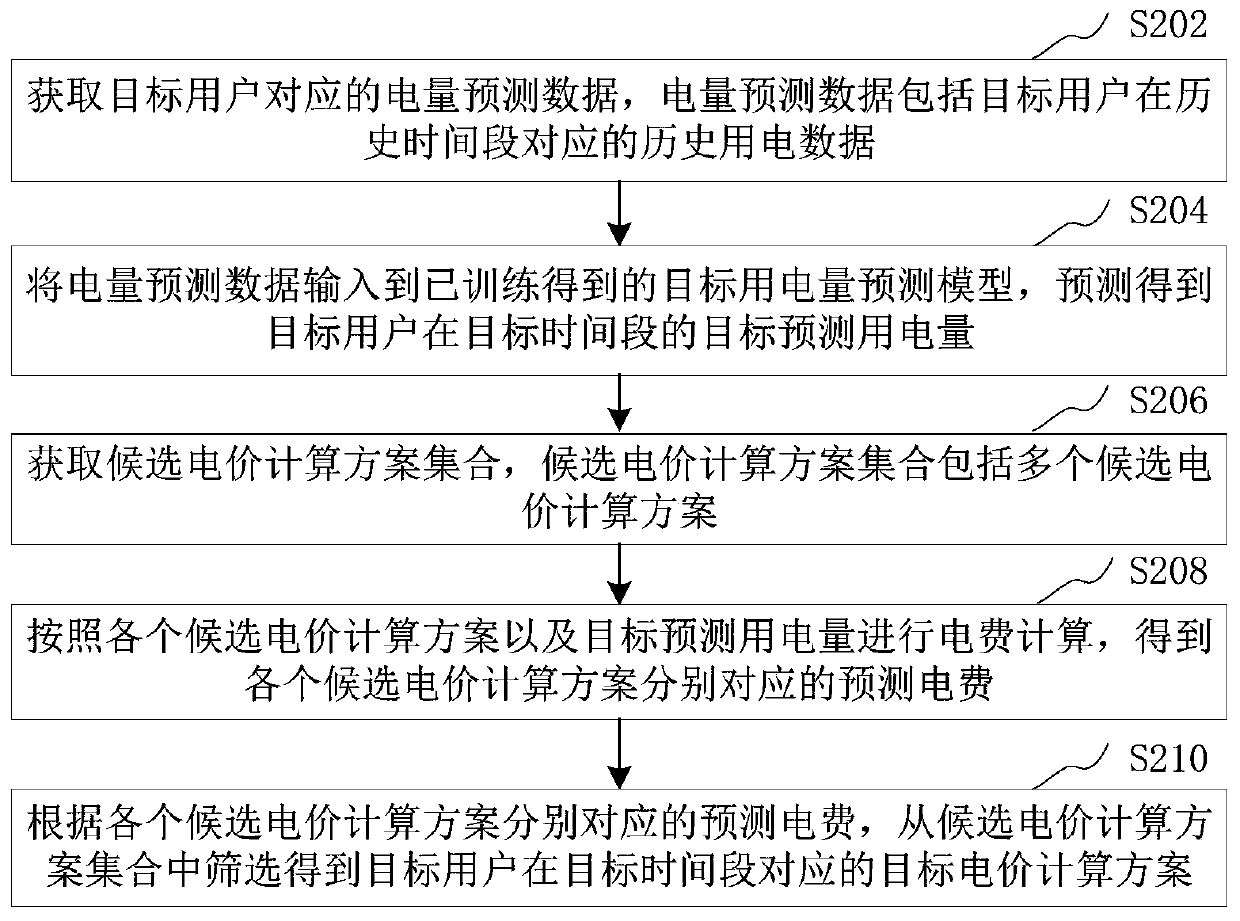Electricity price scheme determination method and device, computer equipment and storage medium
A technology for determining methods and electricity prices, which is applied in the field of data processing, can solve problems such as poor flexibility and high electricity cost for users, and achieve the effect of high flexibility and lower electricity cost
- Summary
- Abstract
- Description
- Claims
- Application Information
AI Technical Summary
Problems solved by technology
Method used
Image
Examples
Embodiment Construction
[0026] In order to make the purpose, technical solution and advantages of the present application clearer, the present application will be further described in detail below in conjunction with the accompanying drawings and embodiments. It should be understood that the specific embodiments described here are only used to explain the present application, and are not intended to limit the present application.
[0027] The method for determining the electricity price scheme provided by this application can be applied to such as figure 1 shown in the application environment. Wherein, the terminal 102 communicates with the server 104 through the network.
[0028] Specifically, the server 104 may analyze the user's electricity charges under different electricity price schemes according to the user's electricity consumption data, and recommend an appropriate electricity price scheme for the user. The server 104 may provide a client or a page, and the terminal 102 may log in or acces...
PUM
 Login to View More
Login to View More Abstract
Description
Claims
Application Information
 Login to View More
Login to View More - R&D
- Intellectual Property
- Life Sciences
- Materials
- Tech Scout
- Unparalleled Data Quality
- Higher Quality Content
- 60% Fewer Hallucinations
Browse by: Latest US Patents, China's latest patents, Technical Efficacy Thesaurus, Application Domain, Technology Topic, Popular Technical Reports.
© 2025 PatSnap. All rights reserved.Legal|Privacy policy|Modern Slavery Act Transparency Statement|Sitemap|About US| Contact US: help@patsnap.com



